Innovative New Proposal by Bjarke Ingels Group Excites Residents at BQE Town Hall
More than 1,000 people packed Plymouth Church in Brooklyn Heights Wednesday night for what has become the most heated debate in Brooklyn.

The Brooklyn Heights Promenade in 2018. Photo by Susan De Vries
At the opening of Wednesday night’s town hall meeting regarding the planned reconstruction of the Brooklyn-Queens Expressway, Hilary Jager of the organization A Better Way NYC laid out the community’s main objectives.
“We’ve been urging the city to ask a different question: not how would you rebuild the Moses-era highway, but what should we rebuild?” she said.
And judging by the number of people that packed into Plymouth Church in Brooklyn Heights last night — well over a 1,000 people, including residents, politicians and members of the press — this question has become the most heated debate in Brooklyn at the moment.
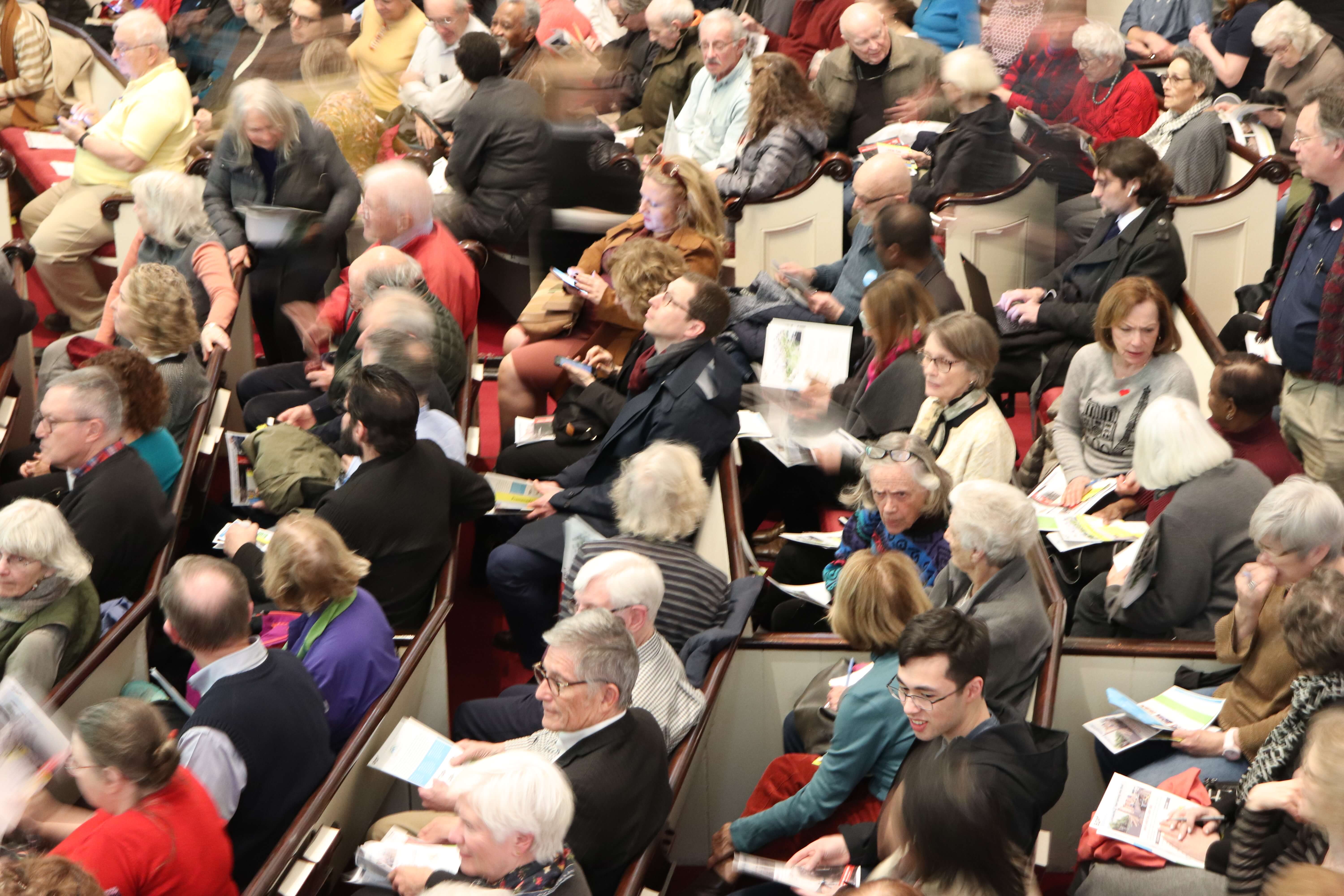
It had already been an eventful day regarding the BQE. Wednesday afternoon, Mayor De Blasio announced that a 16-person “expert panel” would evaluate the different options for the reconstruction before the formal environmental review process kicks off at the end of 2019, a vastly different approach than the one he took several months ago, when he stood behind the DOT’s original two proposals.
There has been near widespread rejection of the two proposals the Department of Transportation laid out last September. Those two proposals included what they called the traditional approach, which would require a new expressway to be built lane by lane and would take more time. The more controversial proposal was called the innovative approach, and, as it was presented, would create a temporary elevated roadway that would temporarily replace the Brooklyn Heights Promenade during the period of rehabilitation. When finished, they said, it could result in a bigger rebuilt promenade.
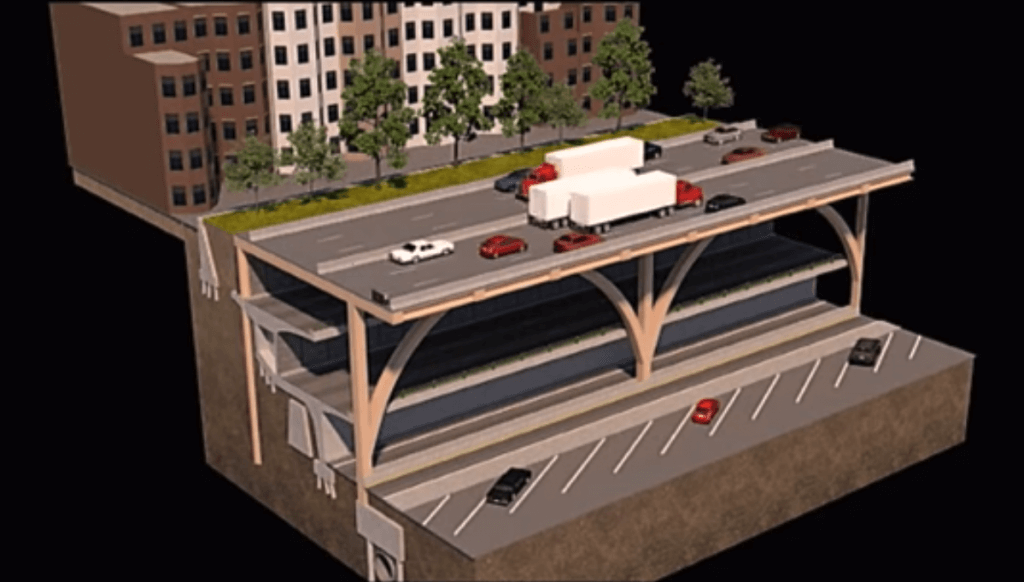
Resistance to both proposals has led, in the time since, to a smattering of alternative plans. And last night, the audience sat patiently through two separate proposals.
Following a solid hour of politicians addressing the audience, including Council Member Stephen Levin, City Council Speaker Corey Johnson and Comptroller Scott Stringer (whose office provided their own alternative plan earlier this year), Marc Wouters was the first to present. His plan, conceived in collaboration with the Brooklyn Heights Association, is dubbed the “Parallel Highway” proposal and calls for temporarily moving traffic west of the existing triple cantilever.
“This is not a permanent solution,” he warned the crowd. “It’s how you get to a permanent solution.”
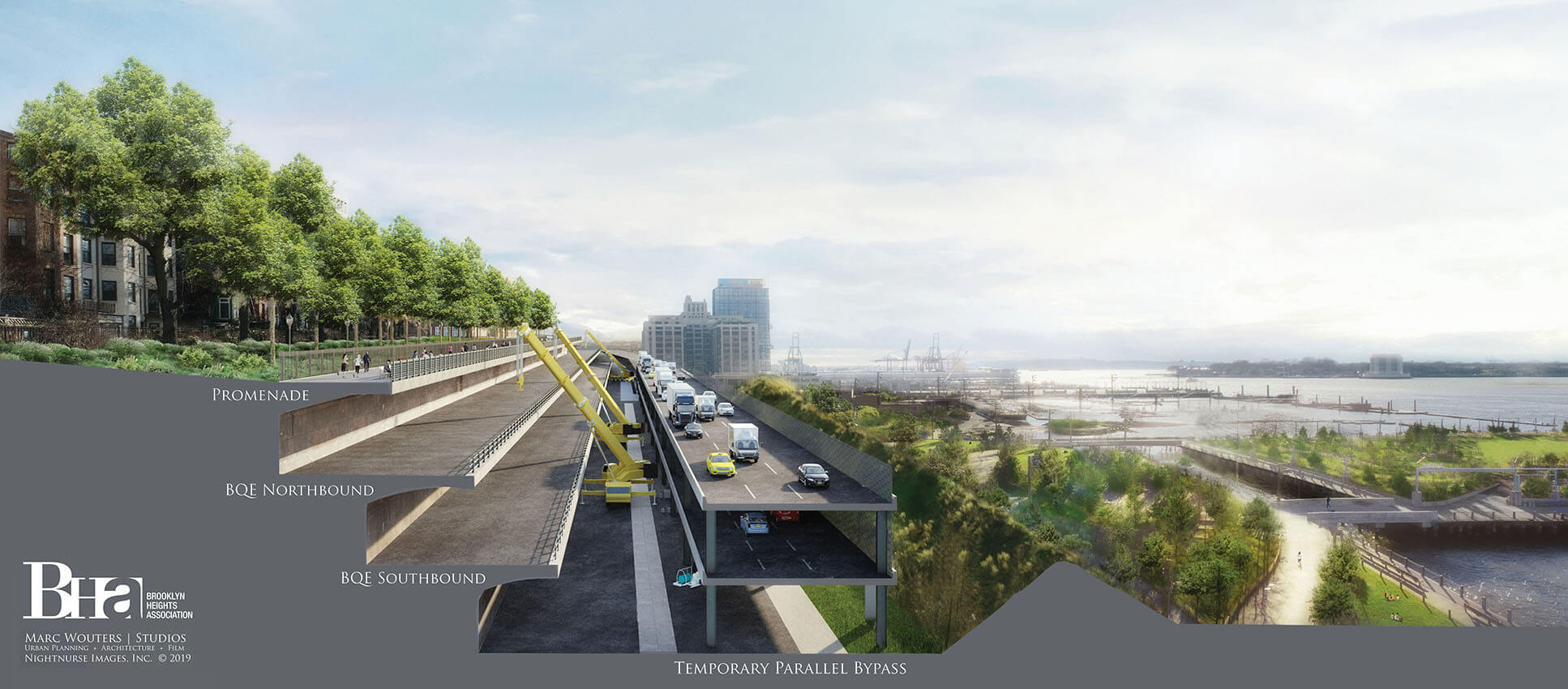
What seemed more like a permanent solution, at least in appearance, was what came next. The second and most anticipated proposal was from Bjarke Ingels Group (BIG). Their plan, which was released to the public Wednesday morning, will turn the cantilevered roadway into public space (or, alternatively, turn the debris into a sloping rock wall), create a six-lane highway at ground level and put a public park on top. It would extend Brooklyn Bridge Park and save the promenade.
They started working on this plan pro bono roughly a month and a half ago, said Jeremy Siegel, an associate at the firm and Brooklyn Heights resident. Their plan would minimize temporary roadway elements — building once, not twice — and reduce roadway construction costs.
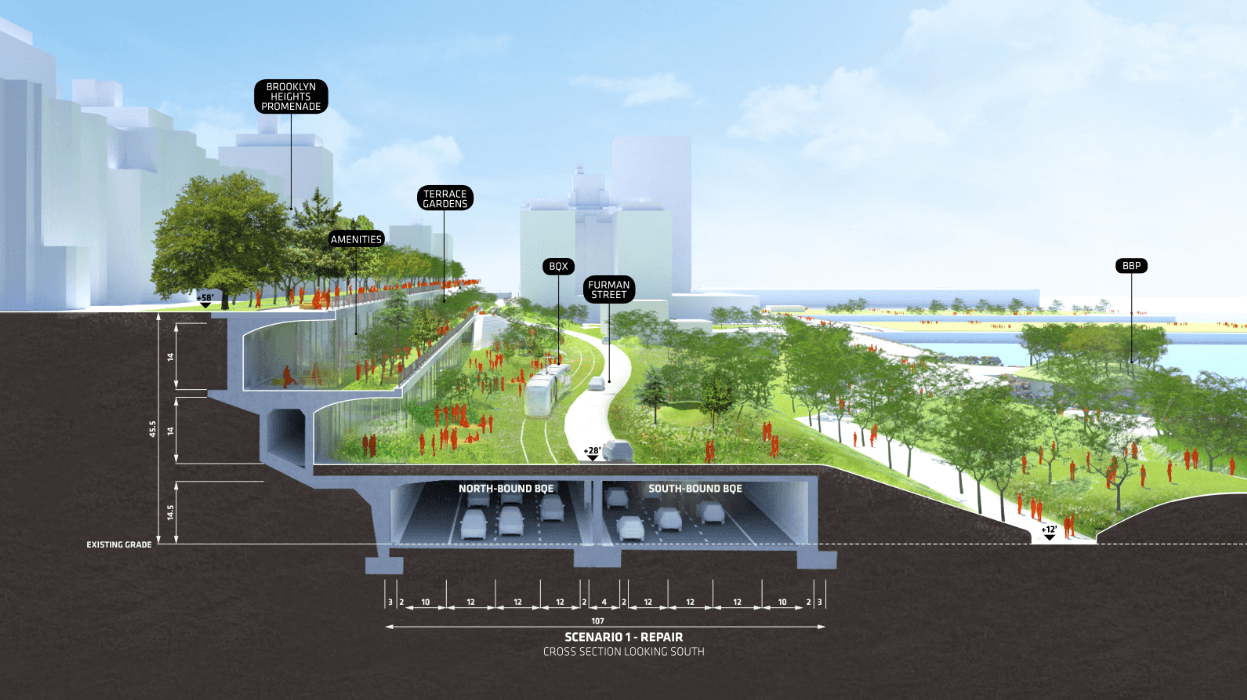
In addition, their proposal would create more than 12 acres of new parkland as well as open up the potential for a continuous linear park stretching from the Brooklyn Bridge to Red Hook.
Elements of the proposal are similar to another that was put forth by Mark Baker in his “Tri-Line Plan,” which was released late last year. “If the same idea develops in two different places at once, you know there’s something to it,” Siegel said.
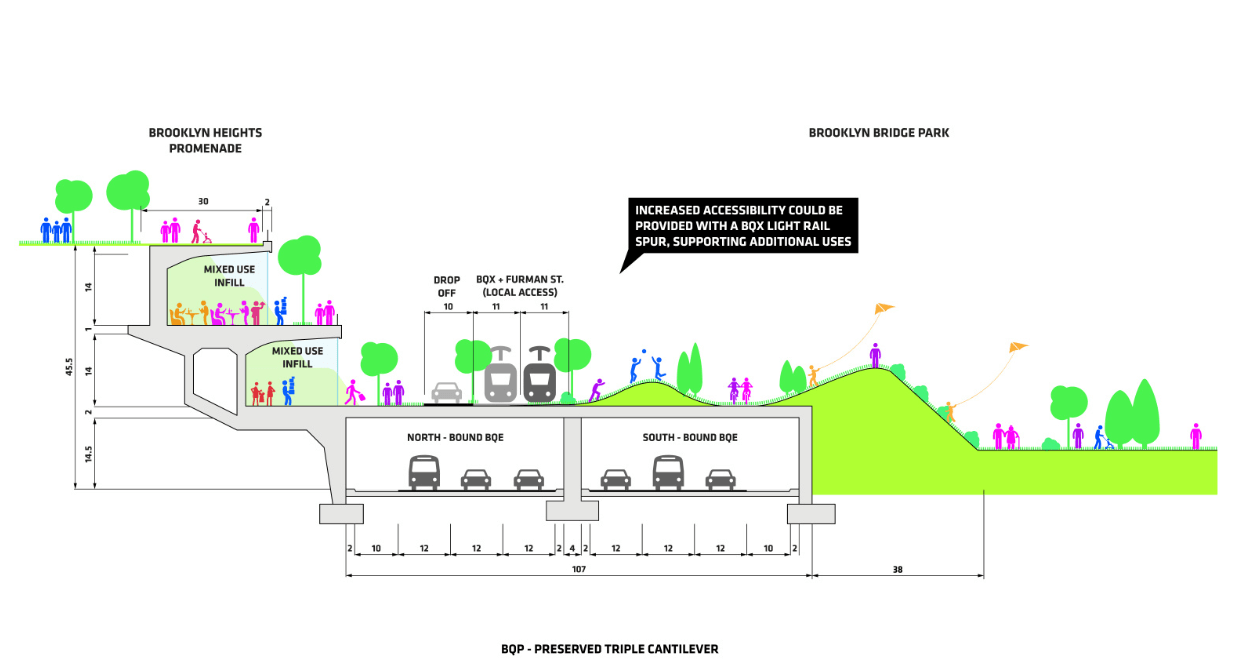
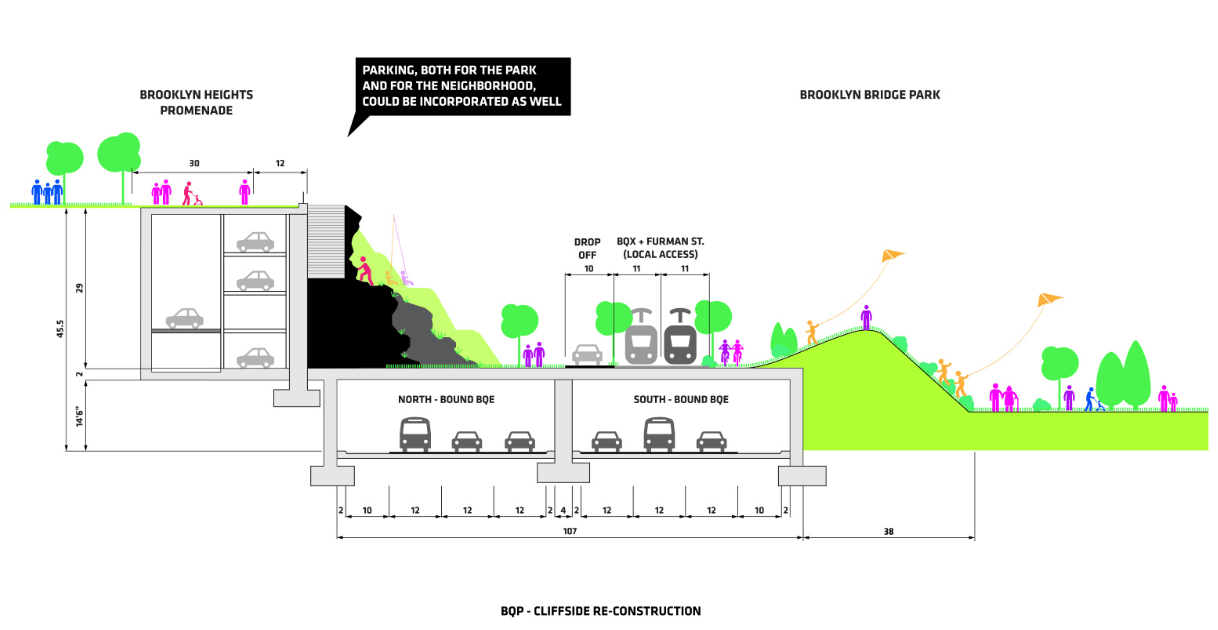
The audience was ecstatic over this new proposal, breaking out into applause multiple times. The tenor of the evening was elevated by Speaker Corey Johnson, who hyped up the crowd with his speech. After announcing that the City Council would be hiring an independent firm to look at all the proposals — separate from the Mayor’s just-announced “expert panel” — he reminded everyone about the stakes at play.
“How we rebuild the BQE will say a lot about how we think people should move around our city in the 21st century,” he said.
Related Stories
- BQE Repairs Take Center Stage at Brooklyn Heights Association’s Packed Annual Meeting
- The Promenade Should Stay, Locals Agree. But What Should Be Done With the BQE?
- Hated, Beloved and Highly Used: The Past, Present and Future of the Brooklyn-Transforming BQE
Email tips@brownstoner.com with further comments, questions or tips. Follow Brownstoner on Twitter and Instagram, and like us on Facebook.


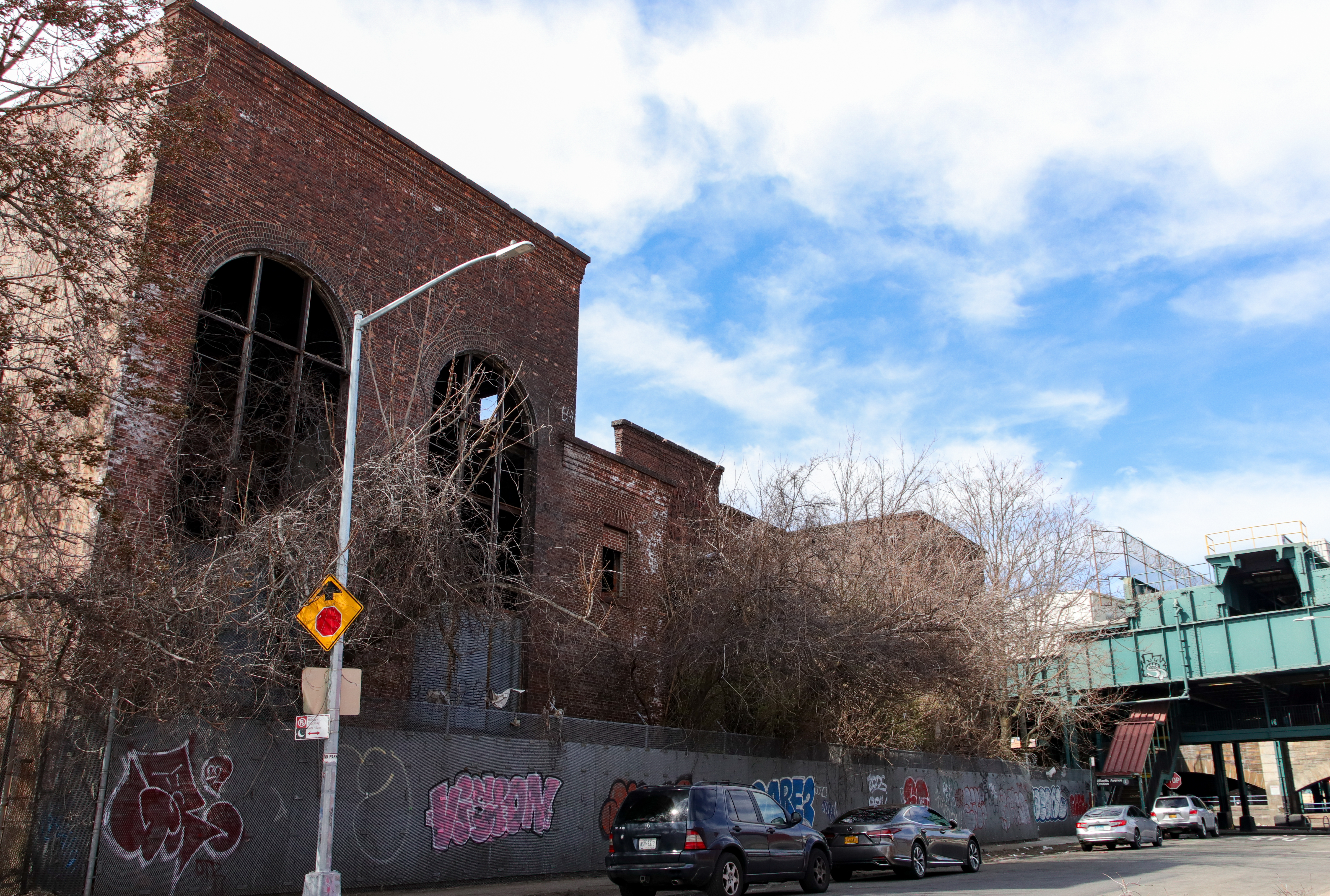
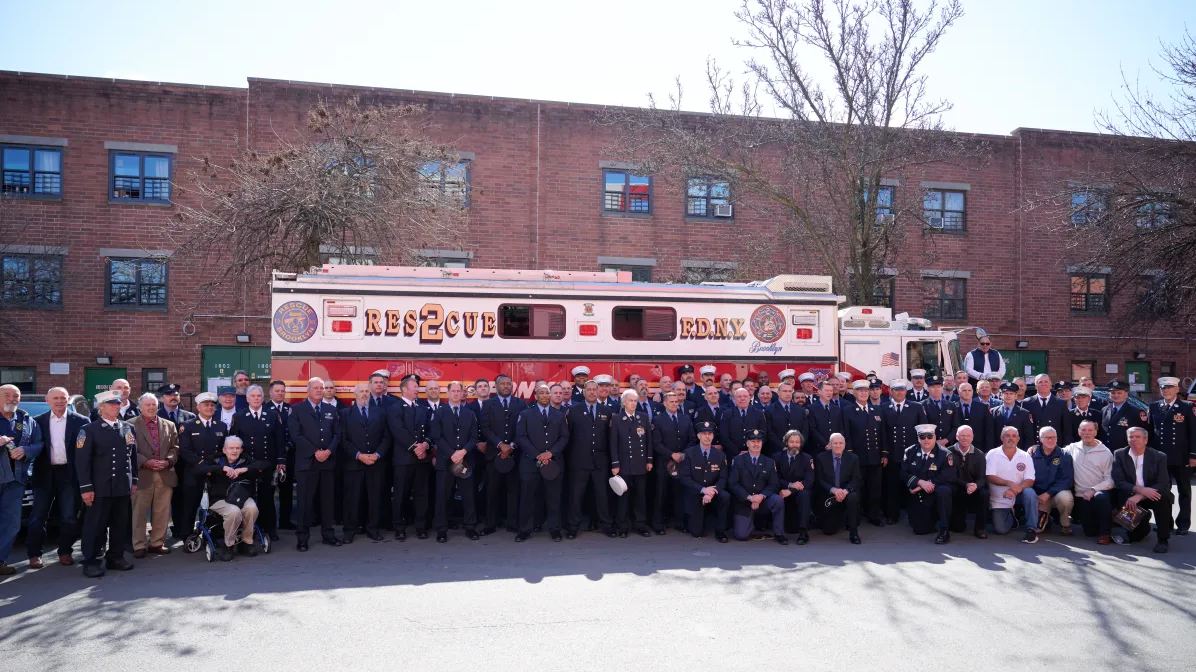
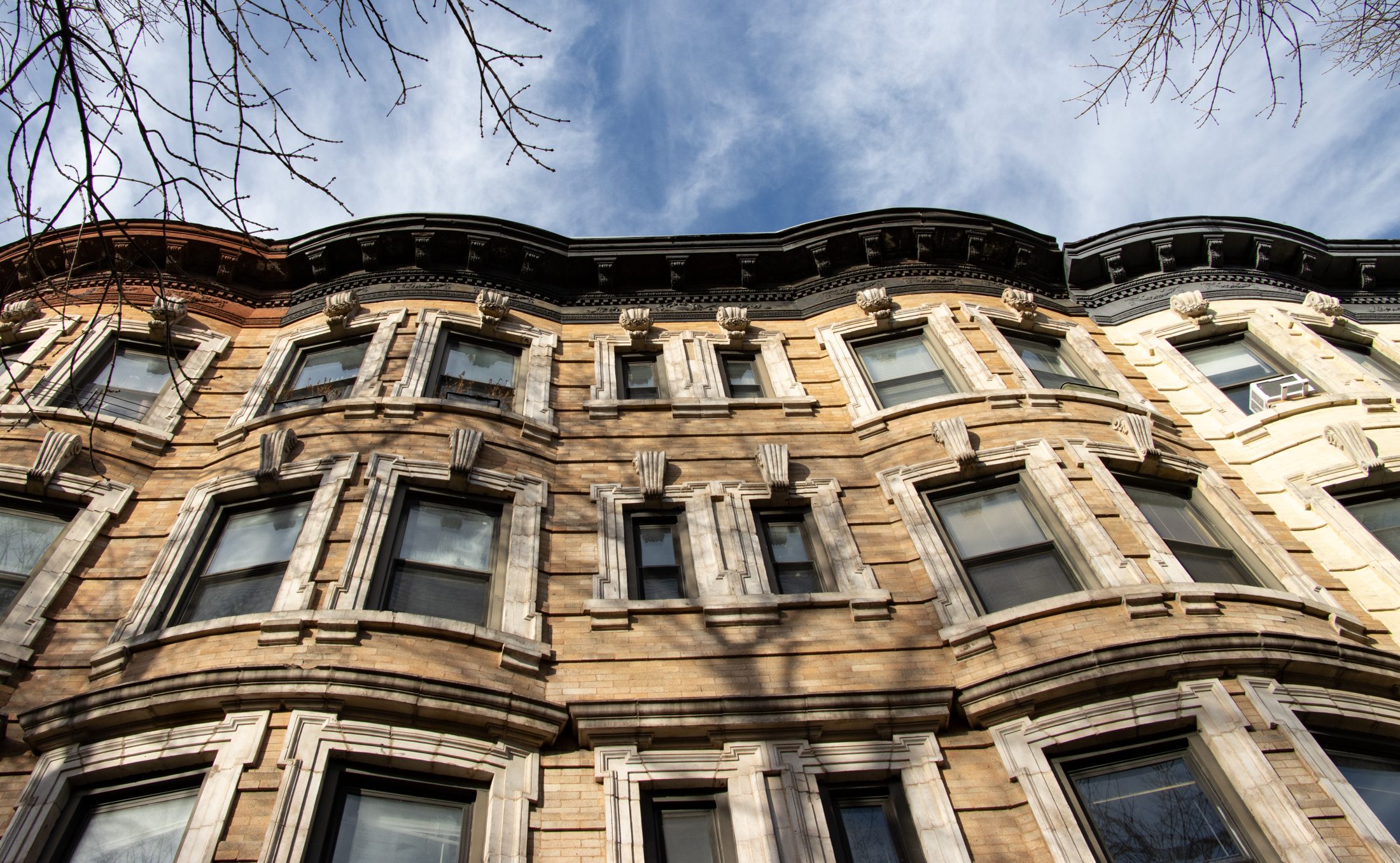




What's Your Take? Leave a Comment